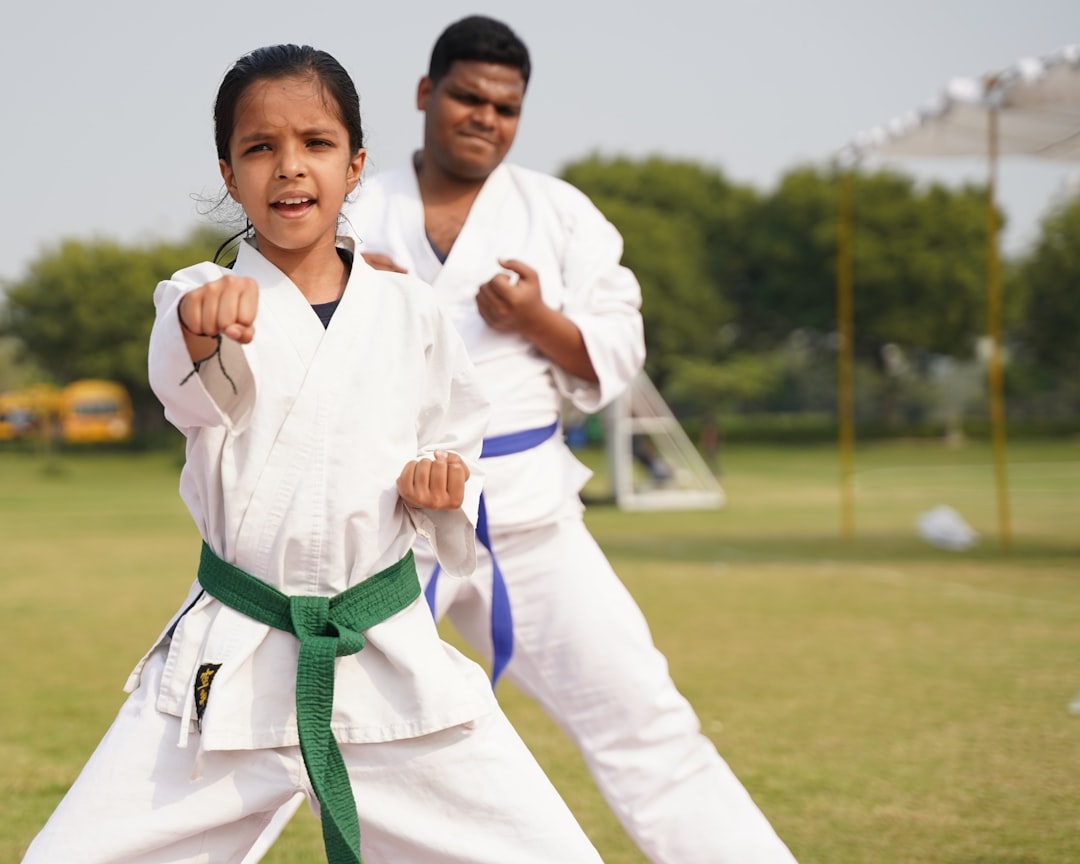To optimize performance and safety during karate sparring, selecting a perfectly fitted karate sparring gi is crucial. It should be measured to accommodate your chest, hips, and thighs without restricting movement or dragging on the ground. The ideal gi for sparring is a single weave cotton variant, offering breathability and lightness. Ensure the jacket reaches your wrists comfortably and the pants stay up without extra belts, while sleeves are cut to neither extend past your hands nor be too short when your arms are extended. A well-fitted gi allows for full range of motion and adheres to karate traditions, reflecting a practitioner's dedication. When purchasing, consider trying different sizes or selecting a vendor with a flexible return policy due to variations in fit across brands. Remember that the material and fit of your sparring gi significantly impact both your comfort and performance, making it an essential aspect of your karate practice.
When stepping onto the karate mat, an athlete’s attire is more than mere clothing—it’s a statement of respect and readiness. A karate uniform, commonly known as a gi, serves as a canvas for discipline and dedication within this traditional martial art. This article delves into the essence of selecting and sizing a karate gi, with a particular focus on the nuances of sparring gis. We’ll explore the significance of gi fit, offer key measurements for optimal performance during sparring, and guide you through the steps to ensure your garb aligns with the rigorous demands of this martial art. Whether you’re a seasoned practitioner or a novice, understanding how to measure karate sparring gis is crucial for both comfort and functionality in your practice.
- Understanding Karate Uniforms: The Significance of Gi Sizing and Selection
- Key Considerations When Measuring for a Karate Sparring Gi
- Step-by-Step Guide to Properly Fitting Karate Gi for Sparring and Practice
Understanding Karate Uniforms: The Significance of Gi Sizing and Selection

When engaging in karate, the uniform, commonly referred to as a “gi,” is more than just a garment; it’s a symbol of respect for the discipline and its traditions. Proper sizing and selection of a karate gi are crucial for both functionality and formality. A gi that is too large or too small can hinder an individual’s range of motion, potentially affecting their performance during sparring sessions. To ensure optimal movement, it’s important to measure for a gi that fits snugly without being restrictive. The jacket should reach just above the hips, while the pants should be hemmed at the ankles to prevent tripping. Additionally, the sleeve and trouser lengths, when the wearer’s arms are held slightly away from the body, should not exceed the wrists and the floor, respectively. Choosing the right gi also involves considering the weight of the fabric; a heavier weave is often preferred for its durability during intensive training, whereas a lighter material might be more suitable for competition or warmer climates. Does the gi provide the necessary freedom of movement while maintaining the traditional karate aesthetic? Is it tailored to fit without compromising on the principles of karate? When these questions are answered affirmatively, the practitioner can focus solely on perfecting their techniques and skills, with their uniform serving as a testament to their dedication to the art.
Key Considerations When Measuring for a Karate Sparring Gi

When preparing for a karate sparring session, selecting the appropriate gear is crucial for both performance and safety. Among these essential items is the karate sparring gi. Measuring for this garment ensures that it fits properly, allowing for optimal movement and protection during the intense physical activity of sparring. The key considerations when measuring for a karate sparring gi include the length and width of the wearer’s torso, as well as the correct sizing for the sleeves and pants. How long and wide should the gi be to accommodate your movements without being overly baggy or restrictive? A well-fitted gi should reach just above the wrist and ankle when extended from the corresponding sleeve cuff or pant hem, with enough room to move freely but not so much that it becomes a hindrance. Does the gi hinder your range of motion, or does it leave excess fabric that could catch on objects or opponents’ limbs? Adjusting the fit of the gi can prevent these issues, ensuring that the garment remains secure and comfortable throughout the sparring session. Additionally, the thickness and material of the gi should be considered; they contribute to the level of protection provided during practice. What material will offer both durability and flexibility? Lightweight, breathable fabrics are often preferred for their comfort and ability to withstand the rigors of sparring without adding unnecessary weight or bulk. Ensuring that the karate sparring gi is properly measured and fitted is an essential step in preparing for a safe and effective training session.
Step-by-Step Guide to Properly Fitting Karate Gi for Sparring and Practice

When preparing for a karate sparring session or regular practice, ensuring that your gi fits properly is crucial for both performance and comfort. A well-fitted karate uniform allows for full range of motion, which is essential for executing techniques effectively. To measure for a karate sparring gi, start by standing with your feet shoulder-width apart. Use a tailor’s measuring tape to record the circumference of your chest just below the armpits, as this determines the size of the top half of the gi. For the bottoms, wrap the tape measure around the fullest part of your hips and thighs simultaneously to ensure the pants are not too tight or too loose when bending into a sparring stance. Remember, the fabric should not be overly restrictive as you move; it should permit a full range of motion without dragging on the ground.
Once you have the correct measurements, selecting the appropriate size gi becomes straightforward. However, keep in mind that different brands may fit differently. It’s advisable to try on various sizes if possible, or purchase from a retailer with a flexible return policy. For sparring, opt for a single weave cotton gi as it is lighter and more breathable than the double weave, which is often used in competitions for its durability. Ensure that the jacket reaches your wrist when your arm is relaxed at your side, and the pants should stay up without the need for a belt over your sparring gear. The sleeves should not be too long, impeding your movements, nor too short, revealing your gi underneath. Properly fitting sparring attire enhances both your technique and your confidence on the mat.
In wrapping up our exploration of the traditional garb in karate practice, it’s clear that a well-fitted karate gi, particularly tailored for sparring, is more than just an attire choice—it’s an integral part of a practitioner’s readiness and performance. Whether you’re gauging measurements accurately or selecting the right style and fit, understanding the nuances of karate sparring gis is paramount for both safety and comfort during intense training sessions. This article has outlined the critical steps to ensure your garb not only reflects the discipline’s rich heritage but also supports the demands of modern martial arts practice. Remember, when it comes to measuring for a karate sparring gi, precision is key to optimizing movement and protection. With this knowledge, practitioners can confidently step onto the mat, prepared for the rigors of their training and ready to demonstrate the strength and skill karate embodies.
